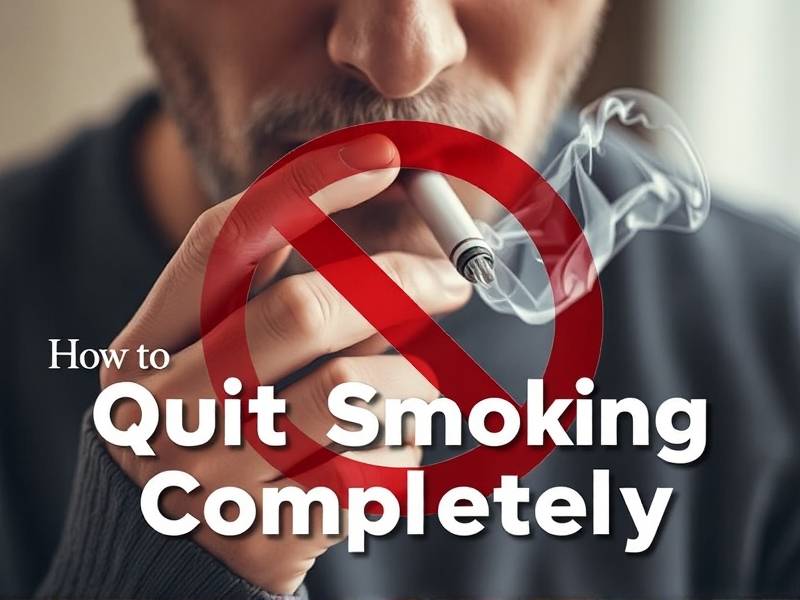How to Quit Smoking Completely
How to Quit Smoking Completely: A Comprehensive Guide
Introduction: Smoking has been a long-standing habit that affects millions of people worldwide. The detrimental effects of smoking on health are well-documented, and quitting smoking is one of the most significant steps towards a healthier lifestyle. If you're determined to quit smoking completely, this comprehensive guide will provide you with valuable insights and practical tips to help you on your journey.
-
Understanding the Importance of Quitting Smoking Before embarking on your journey to quit smoking, it's crucial to understand why it's essential. Smoking increases the risk of numerous health issues, including heart disease, lung cancer, and stroke. By quitting, you can significantly reduce these risks and improve your overall well-being.

-
Setting Realistic Goals Quitting smoking is a gradual process that requires patience and determination. Start by setting realistic goals that align with your timeline and circumstances. Whether it's quitting cold turkey or using nicotine replacement therapy (NRT), having clear goals will keep you focused and motivated.
-
Identifying Triggers Identifying triggers is crucial in avoiding situations that may lead you back to smoking. Common triggers include stress, social gatherings, or even certain smells or tastes associated with cigarettes. Recognizing these triggers will help you develop strategies to overcome them.
-
Developing a Support System Quitting smoking can be challenging, so having a strong support system is essential. This can include friends, family members, or even support groups dedicated to helping individuals quit smoking. Surrounding yourself with positive influences can provide encouragement and motivation throughout your journey.
-
Alternative Coping Strategies Finding alternative coping strategies for stress or anxiety is vital in preventing relapse. Engaging in activities such as exercise, meditation, or hobbies can help distract you from cravings and provide a healthy outlet for releasing tension.
-
Utilizing Nicotine Replacement Therapy (NRT) NRT products like gum, patches, lozenges, or inhalers can help alleviate withdrawal symptoms by providing controlled doses of nicotine without the harmful toxins found in cigarettes.

-
Consulting Healthcare Professionals Seeking guidance from healthcare professionals can be invaluable in your quit-smoking journey. They can offer personalized advice tailored to your specific needs and recommend additional resources or treatments if necessary.
-
Monitoring Progress and Celebrating Successes Keep track of your progress by marking down dates when you successfully avoided smoking triggers or cravings. Celebrate these milestones as they signify significant progress towards becoming smoke-free.
-
Staying Committed and Persistent Quitting smoking requires commitment and persistence since relapse is common during the initial stages of recovery. Stay focused on your long-term goal of being smoke-free and don't get discouraged by setbacks.
Conclusion: Quitting smoking completely may seem daunting at first glance; however, by understanding its importance, setting realistic goals, identifying triggers, developing coping strategies, seeking support from others, utilizing NRT if needed, consulting healthcare professionals when necessary, monitoring progress regularly while celebrating successes along the way—and most importantly—staying committed—you'll be well on your way to achieving a smoke-free life.
